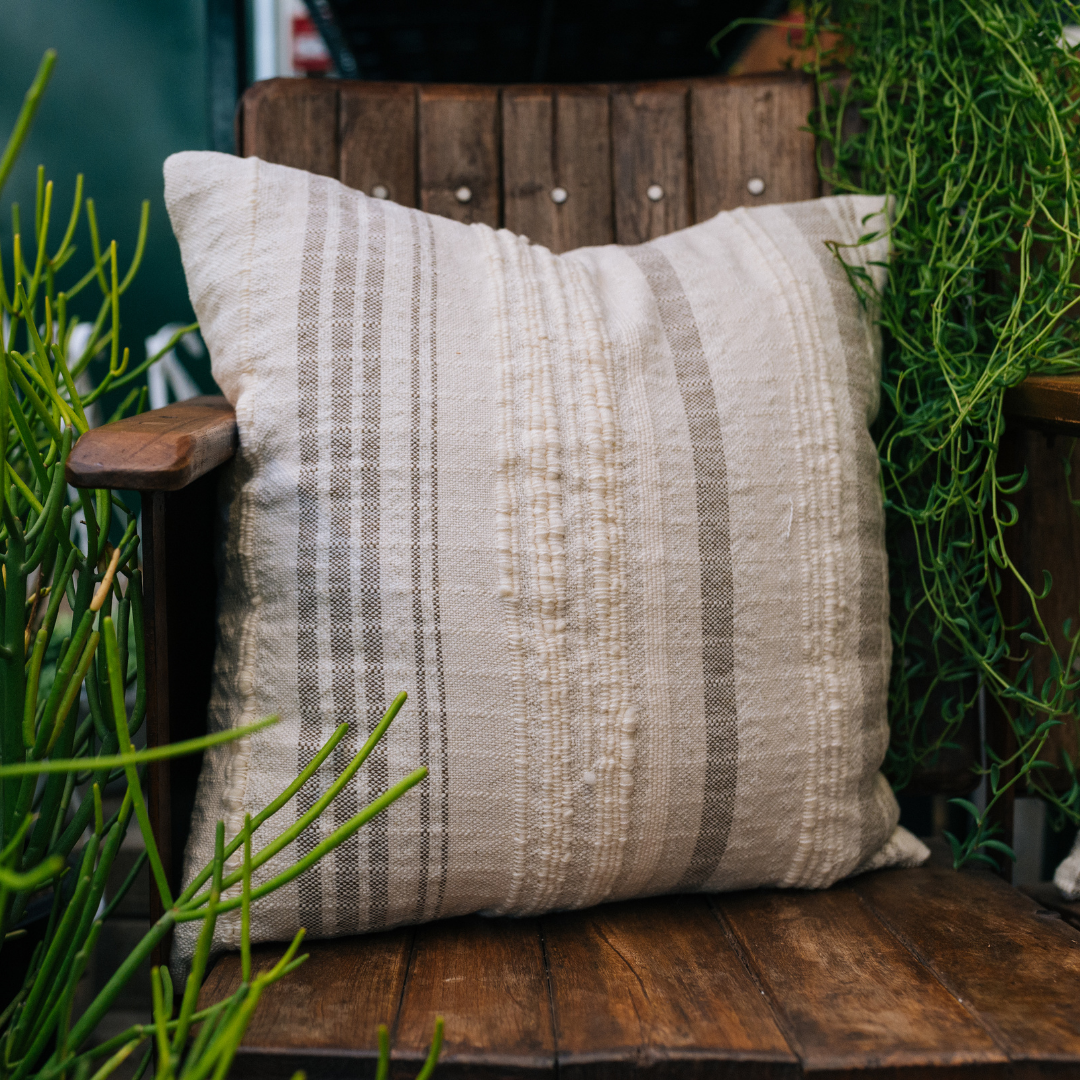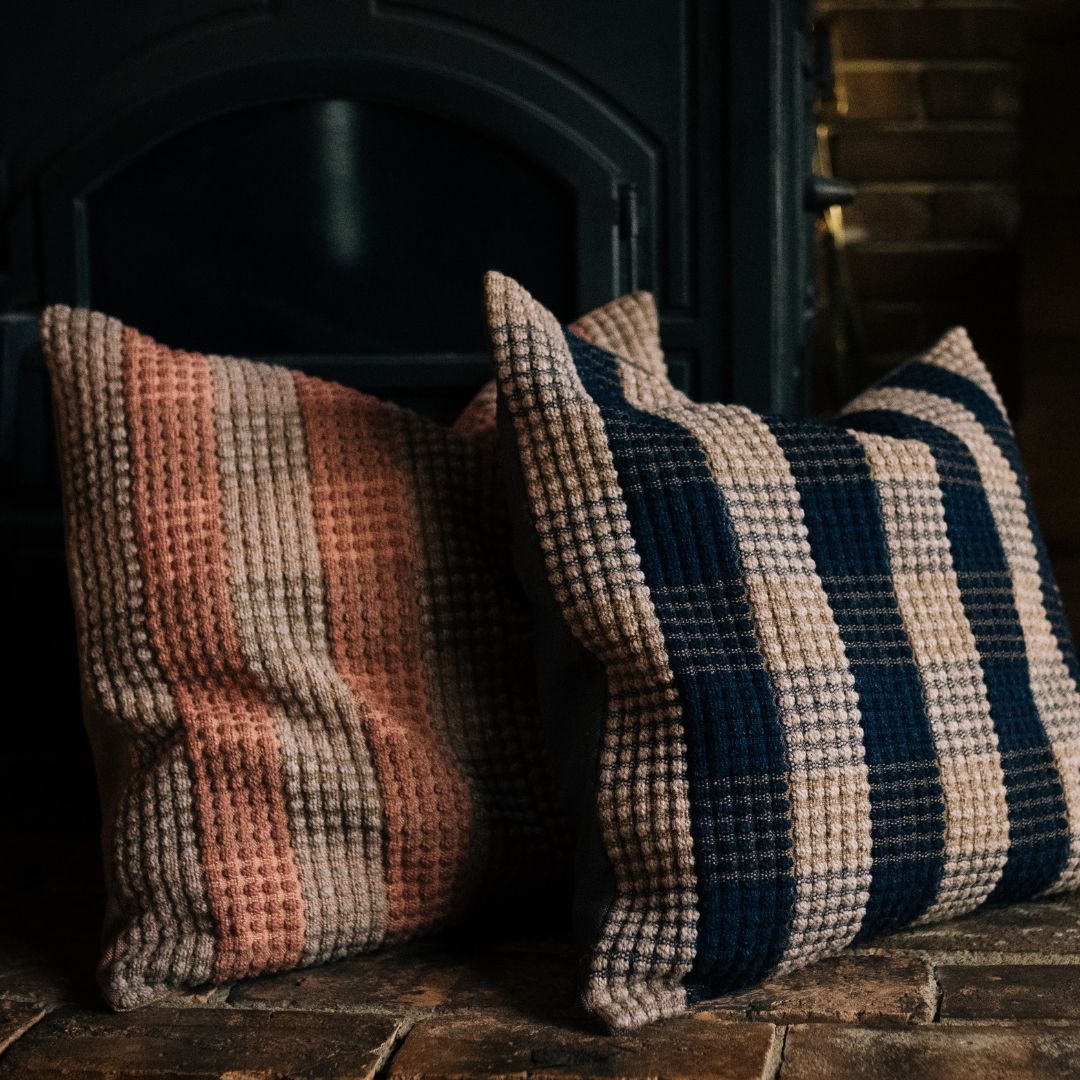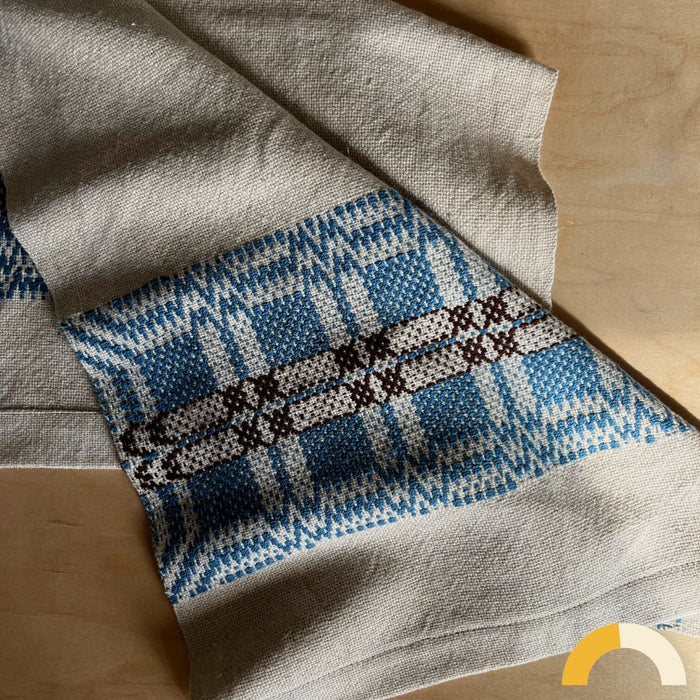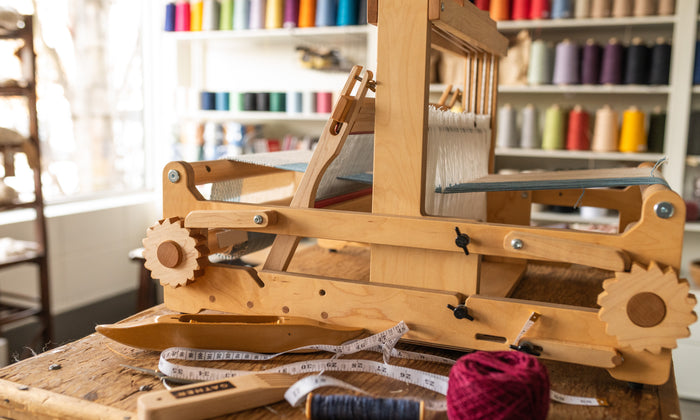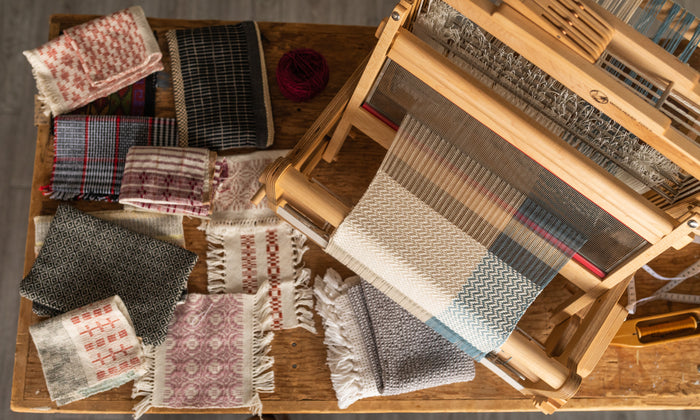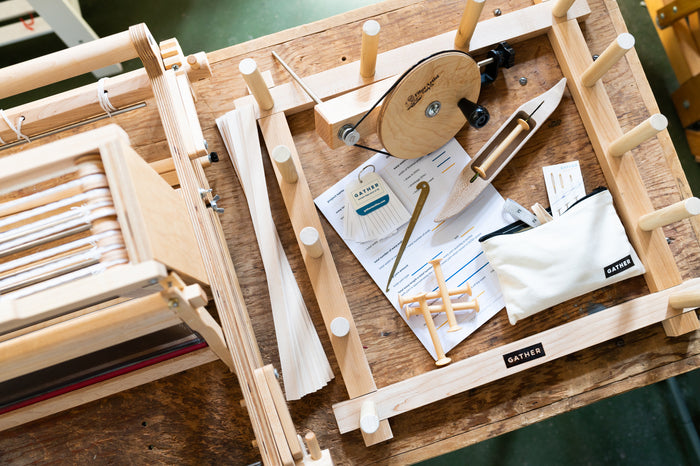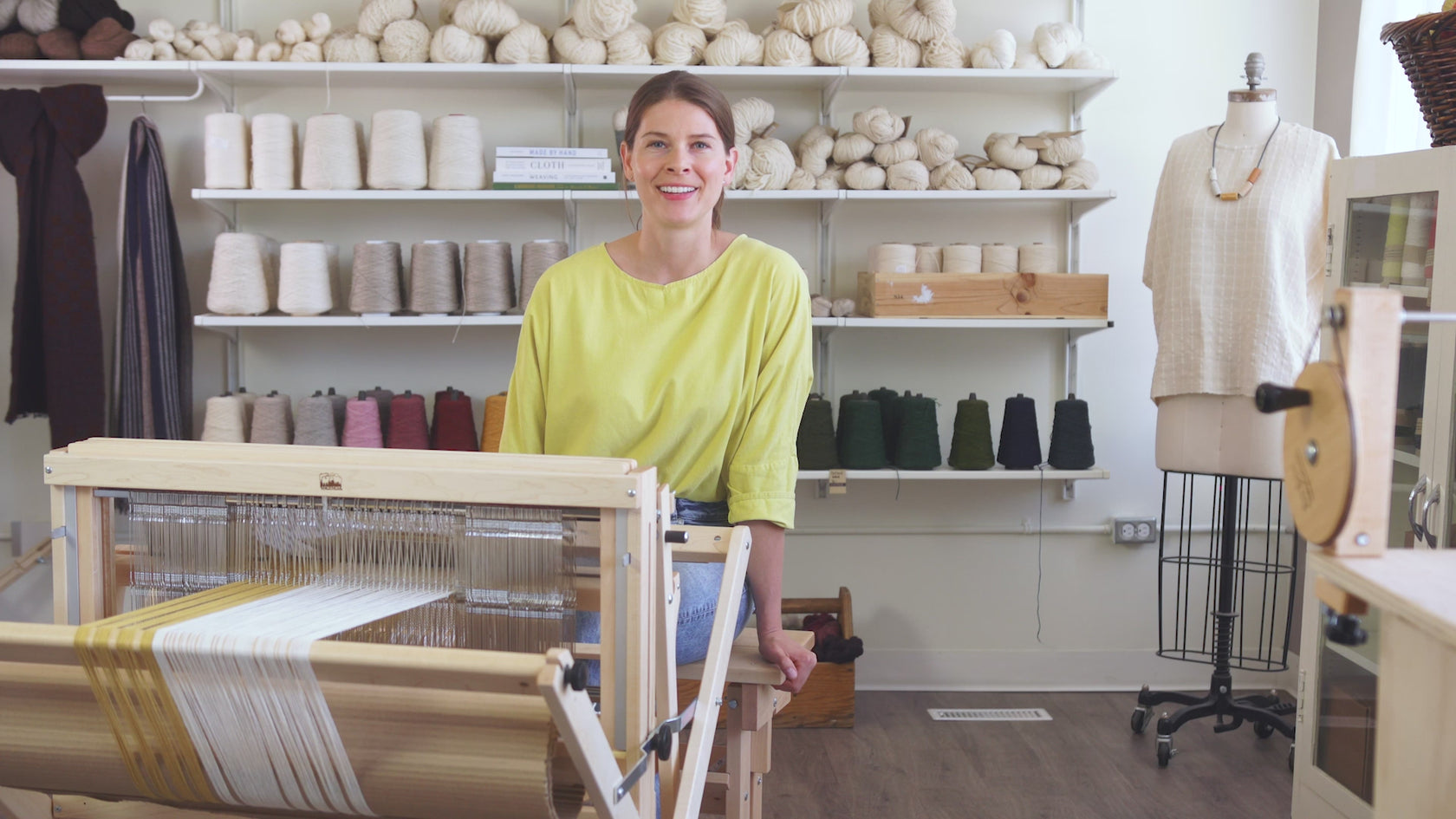Weaving with textured yarns is one of the easiest ways to add some variety and body to your weaving.
Simple structures like plain weave and 2/2 twill come alive in new ways when you swap in a textured yarn for warp, weft, or both. It’s very satisfying to be able to create exciting results without having to tackle new weave structures. Advanced weavers love textured yarns, too. They make dramatic pattern weft for overshot projects, and can be combined with different structures in infinite varieties. Here are some tips and tricks for getting weaving with textured yarns.
Let’s start with some common terms for textured yarns. A slub is any lump or bump in yarn. Some slubs are just errors in otherwise smooth yarn. But some yarns are naturally a bit slubby (like most linen) and some yarns have slubs intentionally added during spinning to create texture. Frequent slubs give yarn a soft thick-and-thin texture. Some yarns, like Mallo, have very dramatic slubs and provide lots of texture. Others, like cotton slub, have smaller slubs and provide more subtle texture. Slubby yarns have an overall rustic vibe. They add an organic feel to a piece by introducing intentional imperfections.
Unlike slubs, nubs aren’t really a technical yarn term. But I needed something to cover yarns that have all-over texture without being properly slubby. Silk noil is a great example of a nubbly yarn. The surface of the yarn is bumpy and nubby, adding some tooth and body to pieces woven with it.
Boucle yarns are spun using a specific technique to create a springy, bouncy, highly textured yarn. One ply of the yarn is held under tension while the other is left relatively loose. The loose ply wraps around the tight ply in unpredictable loops and curls, creating a boucle texture.
These are the most common styles of textured yarns that you’ll see, but they don’t cover everything. There are always more yarns out there to find, feel, and enjoy than we can fit into neat little boxes!
Why Weave with Textured Yarns
Short answer: they look good, they feel good, and they are fun. Textured yarns, especially slubby ones, look beautiful when woven. The slubs stretch out across the warp or weft and add gentle waves and bumps to a woven piece. Slubs in the warp make long vertical streaks. Slubs in the weft make fun horizontal lines, and might wrap around the selvedge from time to time making the whole piece beautifully imperfect. You can also combine slub in warp and weft for an uneven checkerboard look.
Textured yarns make people want to reach out and touch the pieces they are used in. There’s something so inviting about a soft textured surface. Any time I see a piece woven using silk noil I can’t help reaching out to feel the nubby surface. A soft scarf with stripes of textured yarn added into an overall smooth weft instantly looks more inviting and touchable.
There are practical benefits to adding some texture, too! For example, the way that boucle yarns are spun gives them much more surface area than smooth yarns. This means cotton boucle yarns are extremely absorbent and great for towels.
Weaving with textured yarn is just plain fun. You can try swapping your entire warp or weft for textured yarn, or use it selectively to add bars, stripes, or checks. Playing with texture is a great way to break out of a weaving rut!
Practical Considerations for Weaving with Textured Yarns
When planning a project using textured yarns, the first question to ask yourself is “Am I using this as warp or weft?” As usual, if you’re planning on using it for weft the answer is cool, go ahead! Warp yarns, as always, need to be selected with greater care. If your textured yarn is slubby–with some thin and some thick spots–make sure that the thickest point can move smoothly through your heddles and reed. You may need to use a wider reed to prevent abrasion on the warp. Next, see if the thinnest spots still seem strong enough to use for warp. Common slub yarns like Mallo and Brassard cotton slub are perfectly good for warp. If you’re not sure whether a yarn is usable for warp, try searching around for patterns that feature it. If nobody seems to be using it for warp, there might be a good reason!
If your yarn has overall texture like many boucle yarns, make sure that your sett is wide enough to accommodate the extra bulk added by the boucle texture. The boucle cotton that we carry may look more like 8/2, but we recommend setting it at 12 e.p.i–a sett usually reserved for 8/4 cotton. When in doubt, sample!
We hope you’ll enjoy playing with textured yarns as much as we do. They’re a great addition to your weaver’s tool kit, and a reminder that small changes can yield big results.

